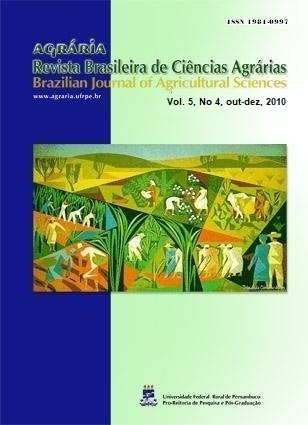Physical-conservationist diagnosis in the study of landuse conflicts in hydrographic microbasins
DOI:
https://doi.org/10.5039/agraria.v5i4a630Keywords:
Geoprocessing, deterioration index, morphometry, environmental planningAbstract
Integrated environmental analysis in watershed are considered strategic for diagnosis of natural resources inappropriate uses and to propose measures for mitigating environmental degradation at different scales. This study aimed to qualify and quantify land-use conflict in microbasins through physical-conservationist diagnosis. For so, an integrated analysis of the morphometrics parameters of water basins, as drainage density, circularity index and average slope, with the rate of physical-conservationist deterioration (IDFC), resulting from the analysis of land-use conflicts, was carried out, in eight microbasins in the municipalities of Pratânia and São Manuel, São Paulo, Brazil. It was observed that the microbasin III had the highest value of IDFC, mainly due to the use of Permanent Preservation Areas, while the microbasin I had the lower value due to the significant land-use by native forests. The combination of physical-conservationist diagnosis with morphometrics parameters results in an effective method for qualifying and quantifying of land-use conflicts in watersheds, thus helping prioritizing actions of environmental management and recovery.



